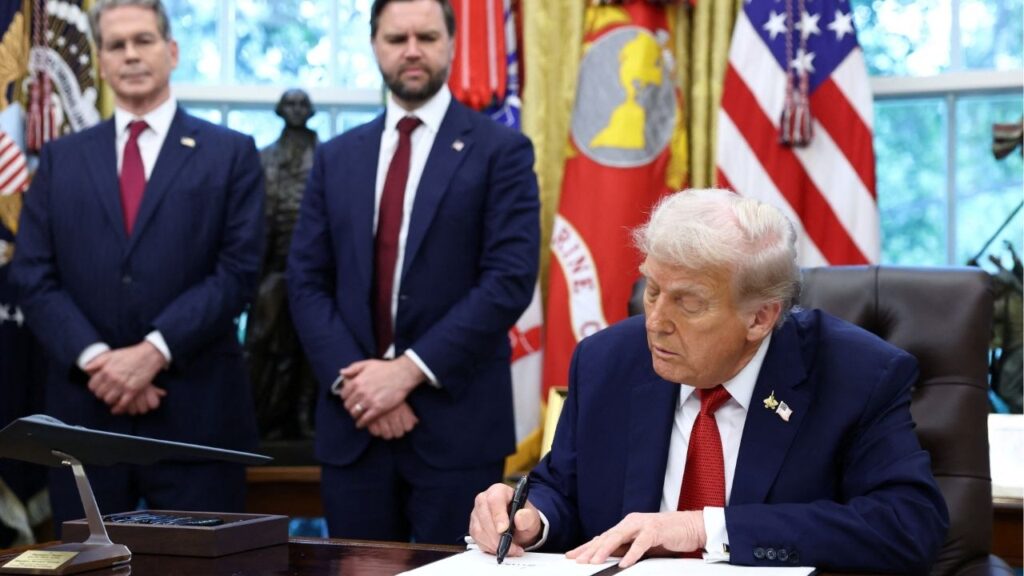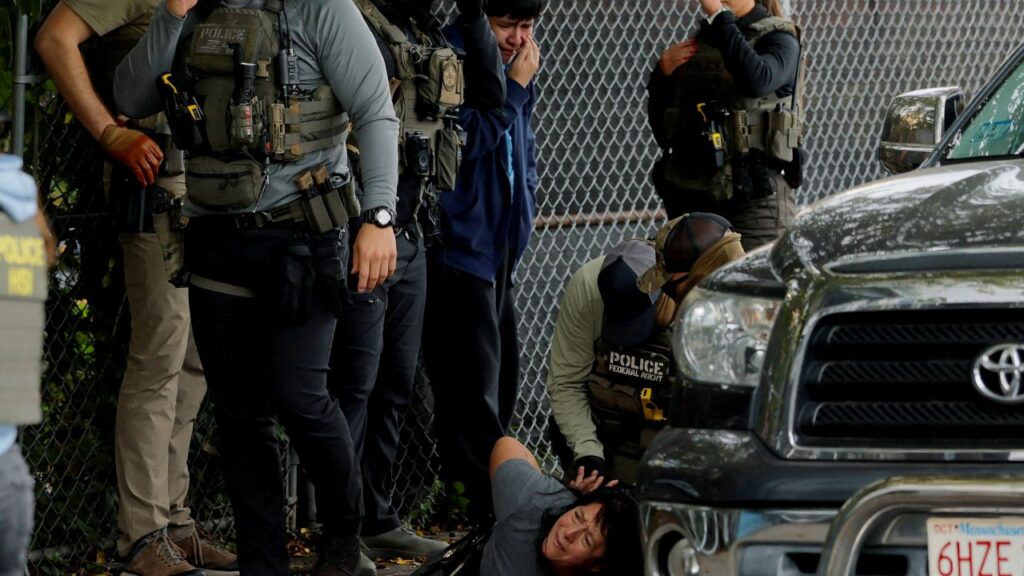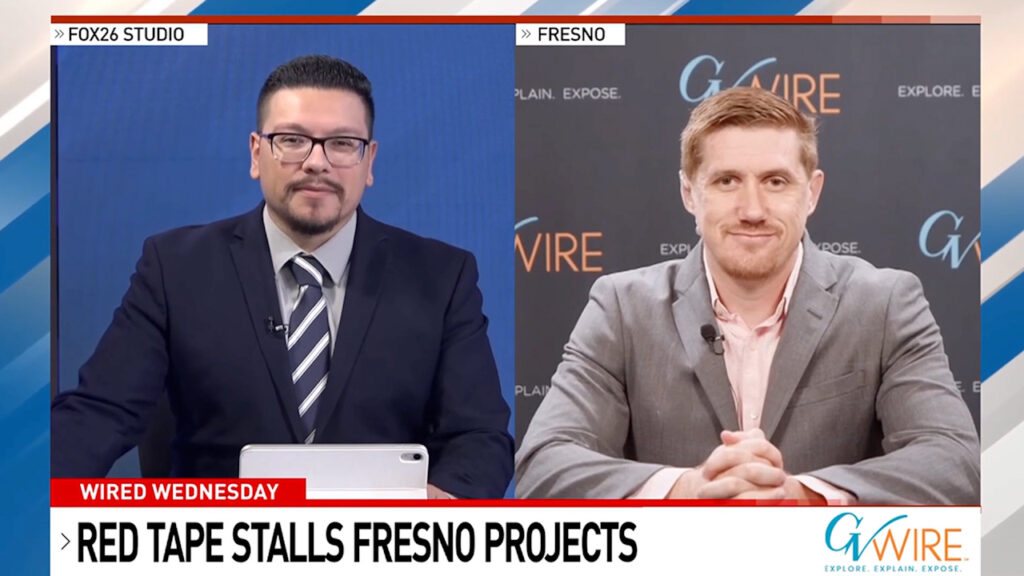Share
|
Getting your Trinity Audio player ready...
|
The Biden administration said Tuesday that it will generally deny asylum to migrants who show up at the U.S. southern border without first seeking protection in a country they passed through, mirroring an attempt by the Trump administration that never took effect because it was blocked in court.
The measure, while stopping short of a total ban, imposes severe limitations on asylum for any nationality except Mexicans, who don’t have to travel through a third country to reach the U.S.
The measure is almost certain to face legal challenges. President Donald Trump pursued a similar ban in 2019 but a federal appeals court prevented it from taking effect.
The Biden administration rule proposed Tuesday has to first go through a 30-day public comment period before it can be formally adopted. If adopted it would remain in place for two years.
Administration officials expect the rule will take effect when a pandemic-era rule that denies asylum on grounds of preventing the spread of COVID-19 ends. That rule, known as Title 42 authority, is set to expire May 11 but has been delayed twice by legal challenges from Republican-led states.
The Homeland Security and Justice Departments argued that surging numbers of migrants left them little choice. They anticipate illegal crossings to climb to between 11,000 and 13,000 a day if no action is taken after Title 42 ends; that’s even higher than the 8,600 daily crossings in mid-December as anticipation spread among migrants and smugglers that Title 42 was about to end. At the last minute the Supreme Court kept it in place.
The proposed rule establishes “a rebuttable presumption of asylum ineligibility” for anyone who passes through another country to reach the U.S. border with Mexico without first seeking protection there, according to a notice in the Federal Register. Exceptions will be made for people with an “acute medical emergency,” “imminent and extreme threat” of violent crimes such as murder, rape or kidnapping, being a victim of human trafficking or “other extremely compelling circumstances.” Children traveling alone will also be exempted, according to the rule.
The rule largely calls on prospective migrants to follow legal pathways to apply for asylum such as using the CBP One app, through which prospective migrants can schedule an appointment to apply to appear at a border entry point to apply for asylum. The administration portrayed these efforts as a way to protect migrants from the dangerous journeys as they travel north to the U.S. and allow the U.S. border entry points to manage the migrant flows in a “safe and efficient manner.” But critics have said the app has been beset by technical problems and its not clear how many appointments are available every day.
U.S. officials insist the measure proposed Tuesday is different from Trump’s, largely because there is room for exemptions and because the Biden administration has made other legal pathways available, particularly humanitarian parole for Cubans, Haitians, Nicaraguans, Venezuelans and Ukrainians.
“We are a nation of immigrants, and we are a nation of laws. We are strengthening the availability of legal, orderly pathways for migrants to come to the United States, at the same time proposing new consequences on those who fail to use processes made available to them by the United States and its regional partners,” said Homeland Security Secretary Alejandro Mayorkas.
The rule was first mentioned in early January as part of a wider announcement by the administration to let in 30,000 migrants a month from four countries — Haiti, Venezuela, Cuba and Nicaragua — provided they apply to come to the U.S. and don’t just arrive at the border. In the ensuing weeks, the administration said migrant encounters from those countries plummeted, and they’ve hailed it as a model for dealing with immigration.
But immigration advocates have criticized attempts to limit asylum applications at the southern border, saying some migrants can’t wait in their home country and noting that other countries don’t have the same asylum protections as the U.S.
Dem Senators ‘Deeply Disappointed’
Four Democratic senators — Bob Menendez and Cory Booker of New Jersey, Ben Ray Lujan of New Mexico and Alex Padilla of California — said they were “deeply disappointed” the administration was moving forward with the rule and urged it to reconsider.
“We have an obligation to protect vulnerable migrants under domestic and international law and should not leave vulnerable migrants stranded in countries unable to protect them,” the senators’ statement read.
Anu Joshi of the American Civil Liberties Union, which litigated many of the challenges to Trump’s immigration restrictions, sharply criticized the rule, saying it was simply revisiting Trump’s asylum ban.
The new rule comes as President Joe Biden is facing a Republican-controlled House determined to make immigration a key issue as they attempt to portray the southern border as out of control.
For asylum seekers traveling north through Central America and Mexico to the U.S. border, Costa Rica and Mexico have the most robust asylum systems. Both countries, however, have been overwhelmed by the surging number of asylum applications in recent years.
Costa Rica, a country of only 5 million residents, trailed only the United States, Germany and Mexico in the number of asylum applications it received in 2021. In December, President Rodrigo Chaves decreed changes to the asylum system, alleging that it was being abused by economic migrants.
Most of those seeking asylum in Costa Rica in recent years are Nicaraguans fleeing repression in that country. In 2012, Costa Rica received barely 900 asylum applications. Last year, the total was around 80,000.
That has created a tremendous backlog and lengthened the process, something that led more Nicaraguans to look north to the United States last year.
Mexico has been facing increased asylum applications for years and last year received 118,478, mostly from Honduras, Cuba, Haiti and Venezuela. Many migrants had used the asylum system to legally cross Mexico while in process and then to try to enter the U.S.
Other countries along the migrant route north have very limited capacity for receiving asylum seekers.
RELATED TOPICS:
Categories

Studs and Duds From Rams’ 27-20 Victory Over Colts
















